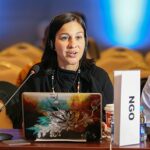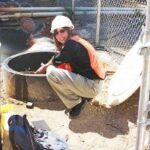Mercury in the North: Sources of Contamination and International Policies to Protect Health & Human Rights
June 15, 2016 @ 9:00am (AKDT)
Mercury is a naturally occurring metal that can damage the human nervous system. Mercury is released to the atmosphere, soil and water from a variety of sources and also has broad uses in everyday objects. The Minamata Convention on Mercury is a global treaty to protect human health and the environment from the adverse effects of mercury.
On this call, we discussed recent Mercury Convention negotiations and the importance of this treaty to the health and human rights of Indigenous communities. Our presenters also discussed sources of mercury contamination in the Arctic and Alaska, including how the proposed Donlin Gold Mine would release significant amounts of mercury if developed, the potential risks this poses to the health of Kuskokwim River watershed fisheries and those who depend on them, and how those risks could be reduced.
Featured speakers
 Rochelle Diver is the Environmental Health Program Coordinator for the International Indian Treaty Council, an organization of Indigenous Peoples from North, Central, South America, the Caribbean and the Pacific working for the Sovereignty and Self Determination of Indigenous Peoples and the recognition and protection of Indigenous Rights, Treaties, Traditional Cultures and Sacred Lands. Rochelle attended the 7th session of the Inter governmental Negotiating Committee on Mercury (INC 7) in March 2016 in Jordan.
Rochelle Diver is the Environmental Health Program Coordinator for the International Indian Treaty Council, an organization of Indigenous Peoples from North, Central, South America, the Caribbean and the Pacific working for the Sovereignty and Self Determination of Indigenous Peoples and the recognition and protection of Indigenous Rights, Treaties, Traditional Cultures and Sacred Lands. Rochelle attended the 7th session of the Inter governmental Negotiating Committee on Mercury (INC 7) in March 2016 in Jordan.

Kendra Zamzow, Ph.D. is an environmental geochemist and is the Alaska representative for the Center for Science in Public Participation, an organization that provides training and technical advice to grassroots groups on water pollution and natural resource issues, especially those related to mining.
